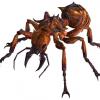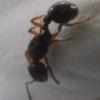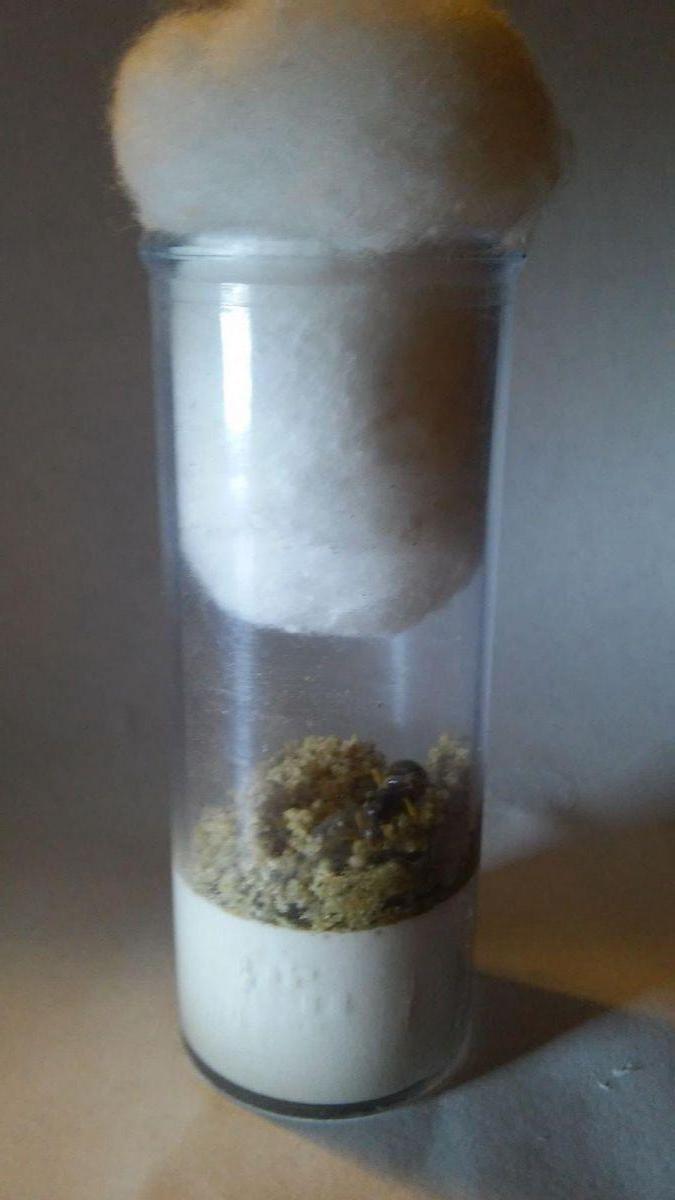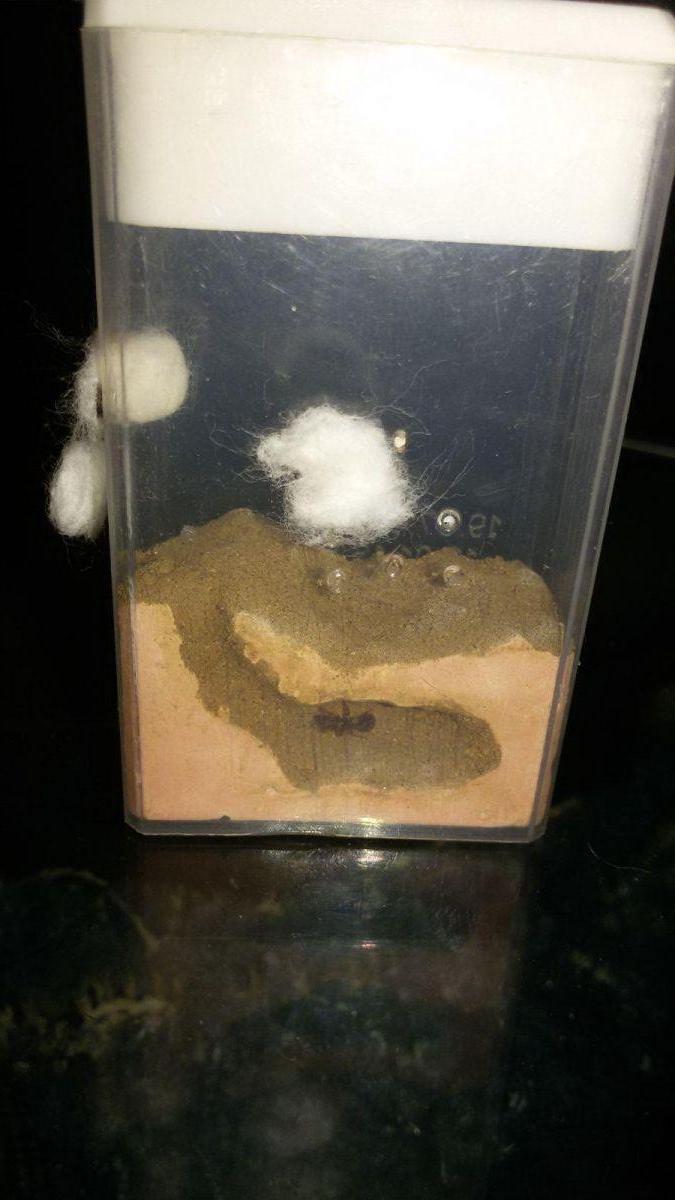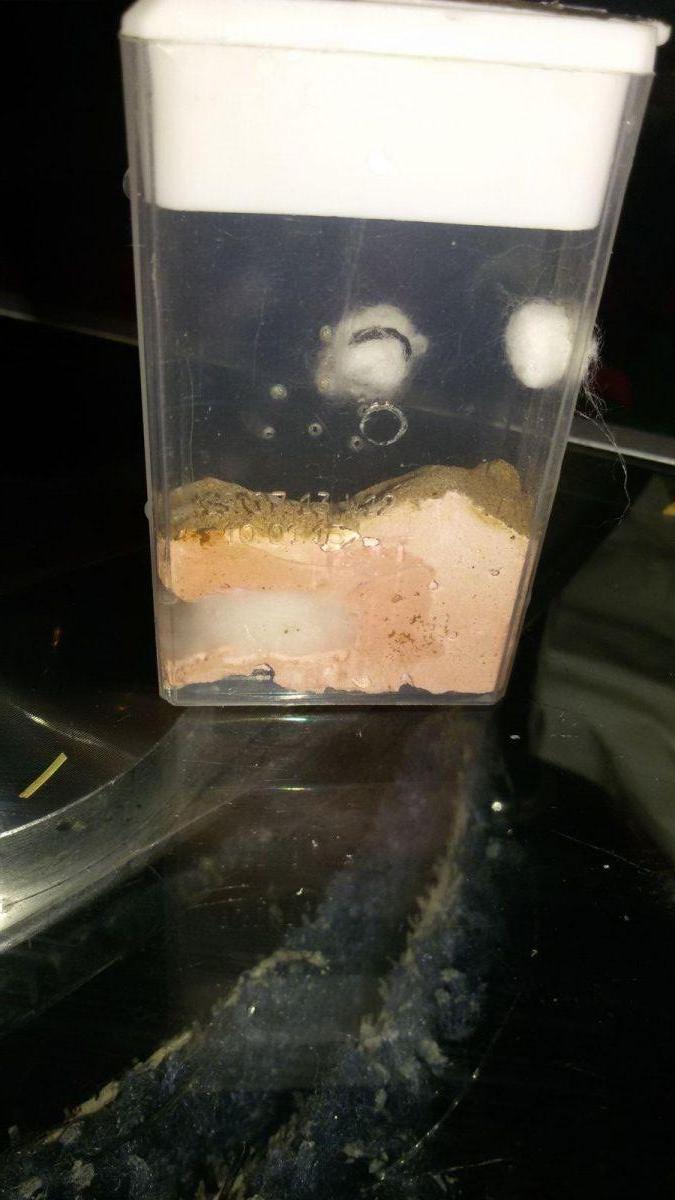Various Methods and Setups used for Founding Queens.
Caring for a queen can be a bit different than caring for a mature colony. Different techniques are used for the different types of queens. Some queens can be trickier than others or have special nesting requirements, food requirements, or something else.
Please keep in mind that there are 3 different categories of queens: fully-claustral, semi-claustral, and socially parasitic. Fully Claustral will not need to forage, where Semi-Claustral will need to forage, and the Social Parasites benefit from being fed until the pupae eclose. (For more details, please see the "Starting Your Own Colony" section in the Ant Guide for Beginner's - http://www.formicult...-for-beginners/ )
Some setups will work for all 3 types, while others will only work for one of the queen categories.
In general, a founding queen needs moisture, food (if semi-claustral or parasitic), and as few disturbances as possible. If you feed her, ensure it is easy to clean up - either with a foraging area, or using something like a tin foil plate.
Basically, any container that is humid and gives the queen the ability to get a drink should work. Just ensure it isn't too large or the queen or nanitics might get lost or store garbage in the nest.
There is even a record somewhere where someone had put a Camponotus queen in a plastic cup with a damp paper towel, and she was able to successfully raise her first workers in that setup.
Test tube:
These have been used a lot for all types of queens. They work well for some species, but not so well for others. Click here to see a Video on how to set up a test tube.
Water fills the bottom 1/4 or 1/3 and uses a cotton ball to hold the water back. Usually made of glass, plastic, or acrylic. Can be substituted with vinyl tubing, prescription pill bottles, syringe tube, or any long narrow object.
Some people use food grade agar agar in 1/3 of the test tube for queens that like to dig. (http://www.formicult...?hl=+agar +agar)
Placing test tubes in a foraging area will allow semi-clastral queens, or small colonies, to forage.
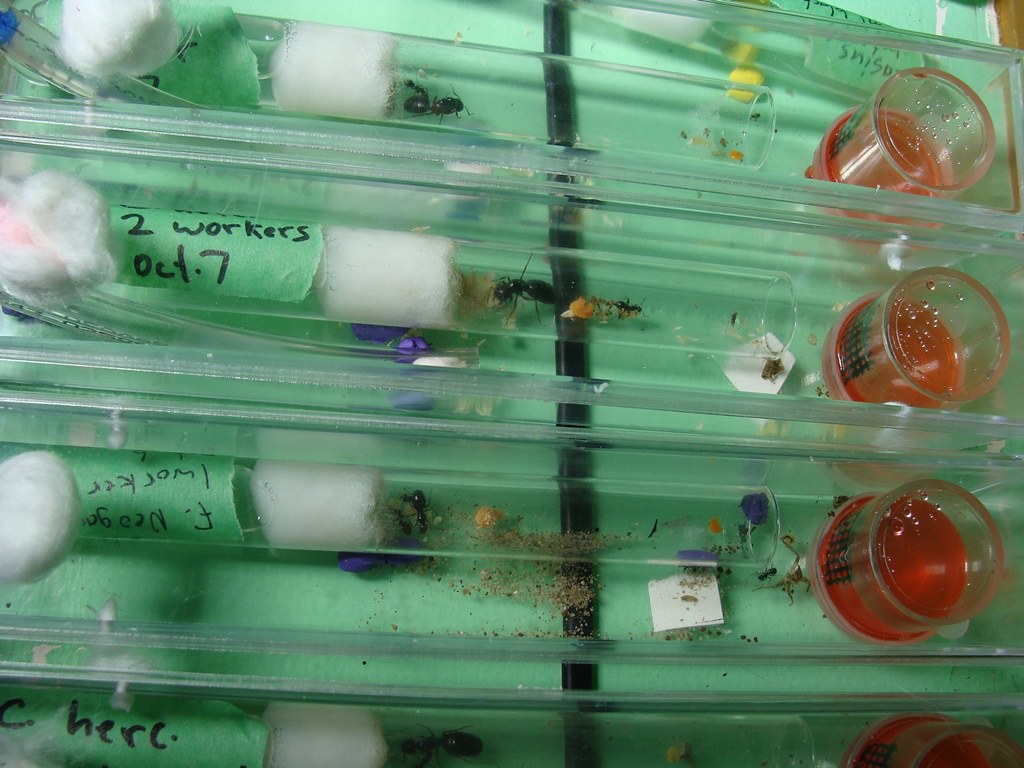
Or you can attach the test tube to the foraging area with tubing:
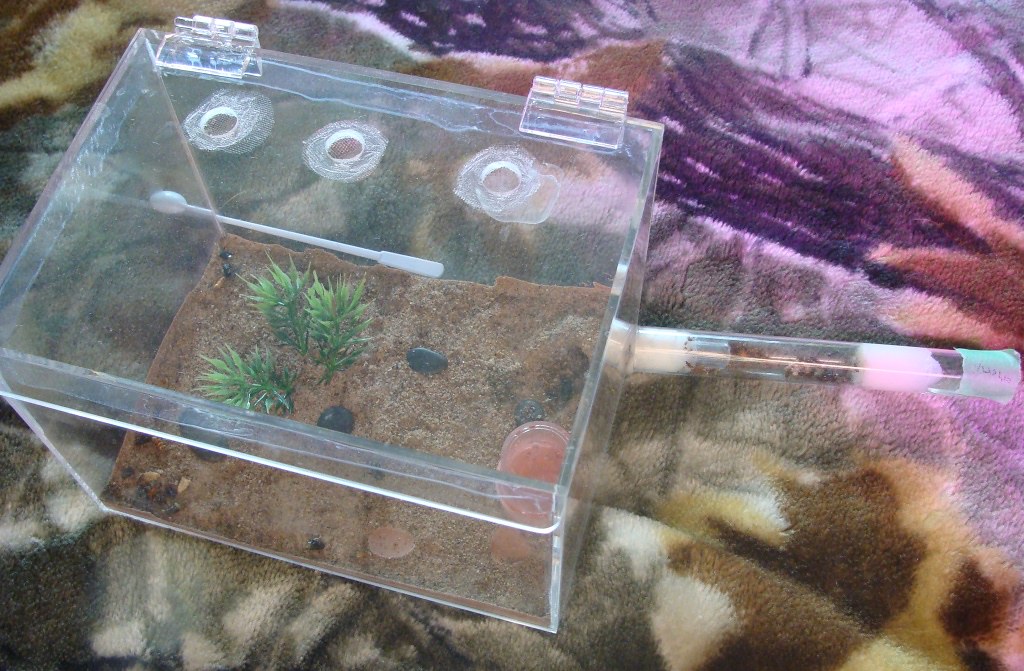
Small formicarium:
This can be done in so many different ways. Any ant nest that has 1-3 chambers will work as long as it is moist enough. They can be made out of many different types of materials (http://www.formicult...ium/#entry11018).
Grout formicarium with outworld – 2 chamber nest combined with a foraging area:

32 ounce deli container with grout and a water chamber below. No tunnels, ants all stay on top.
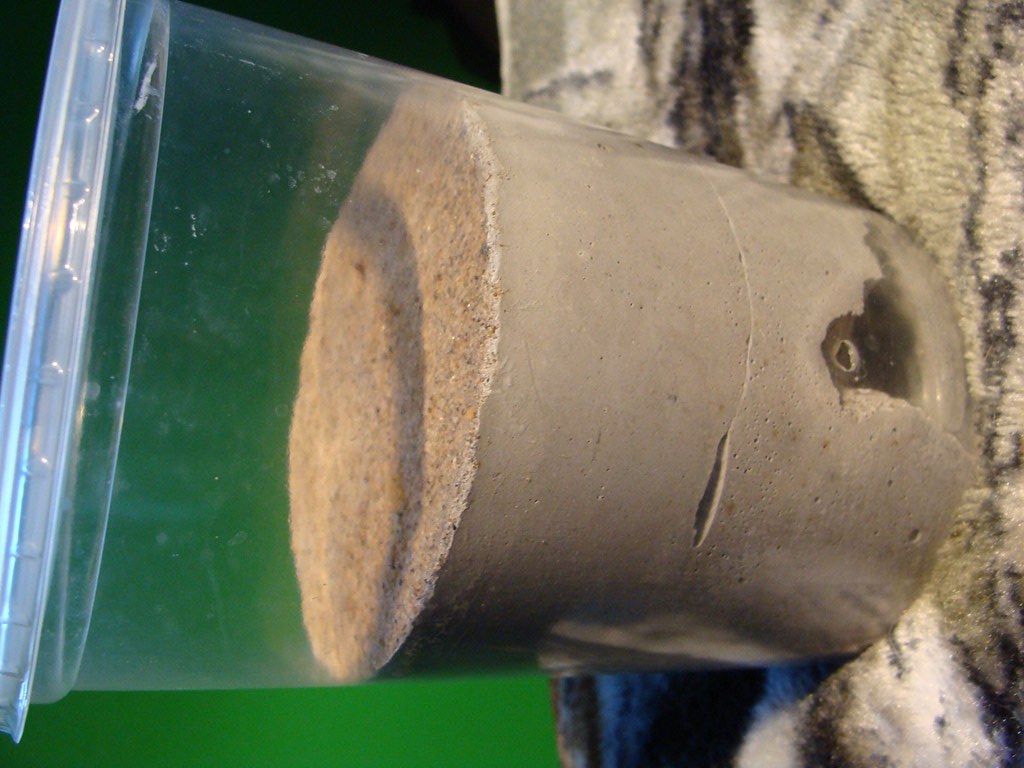
2 chamber nest sitting in a foraging area:
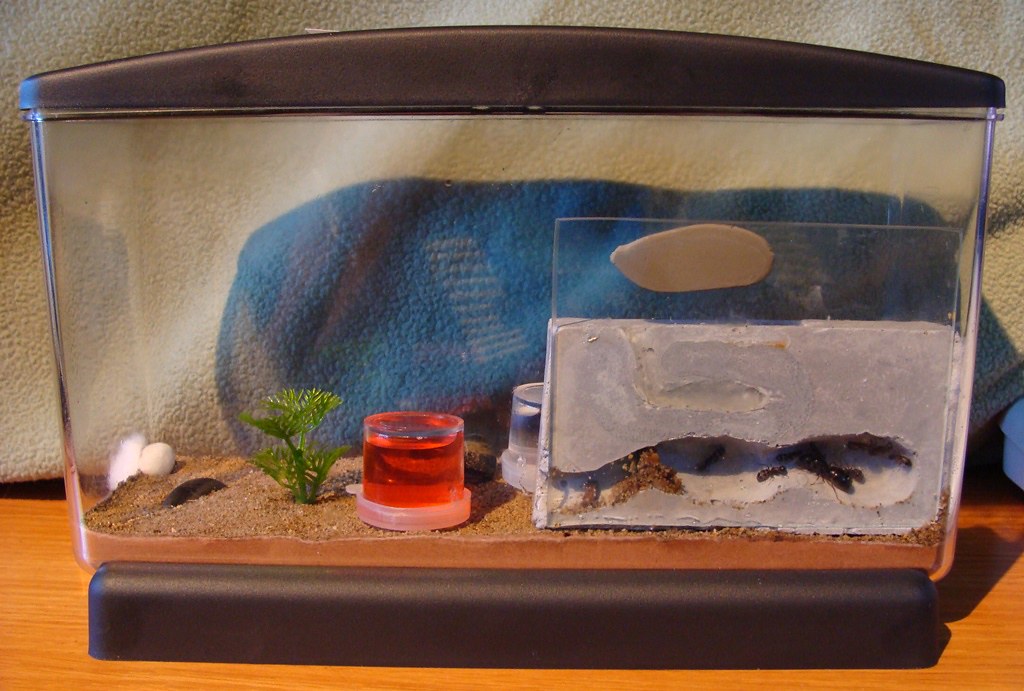
Firebrick formicarium - attached to a foraging area with a very short section of vinyl tubing:
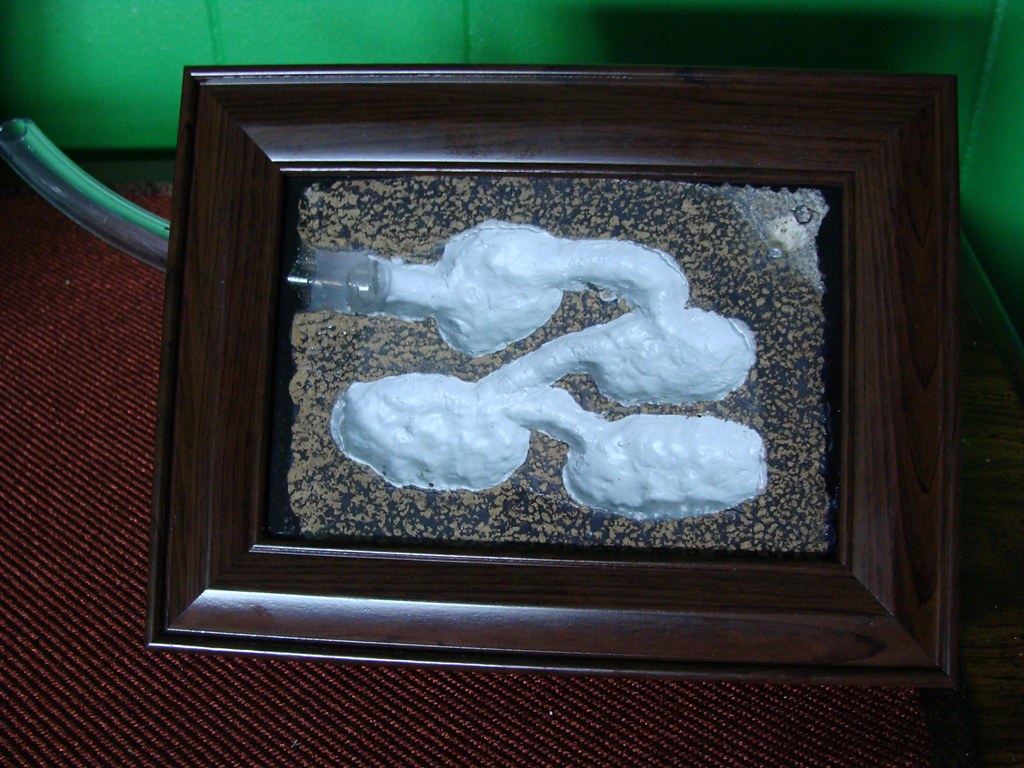
Dirt setup:
This is more natural, but if your queen runs into any problems, it is nearly impossible to help her. Or even see her. Can be tough to move the colony once they need a bigger nest. Tunnel collapses and mold can be problematic.
A flat horizontal nest removes some of the tunnel collapse problems:
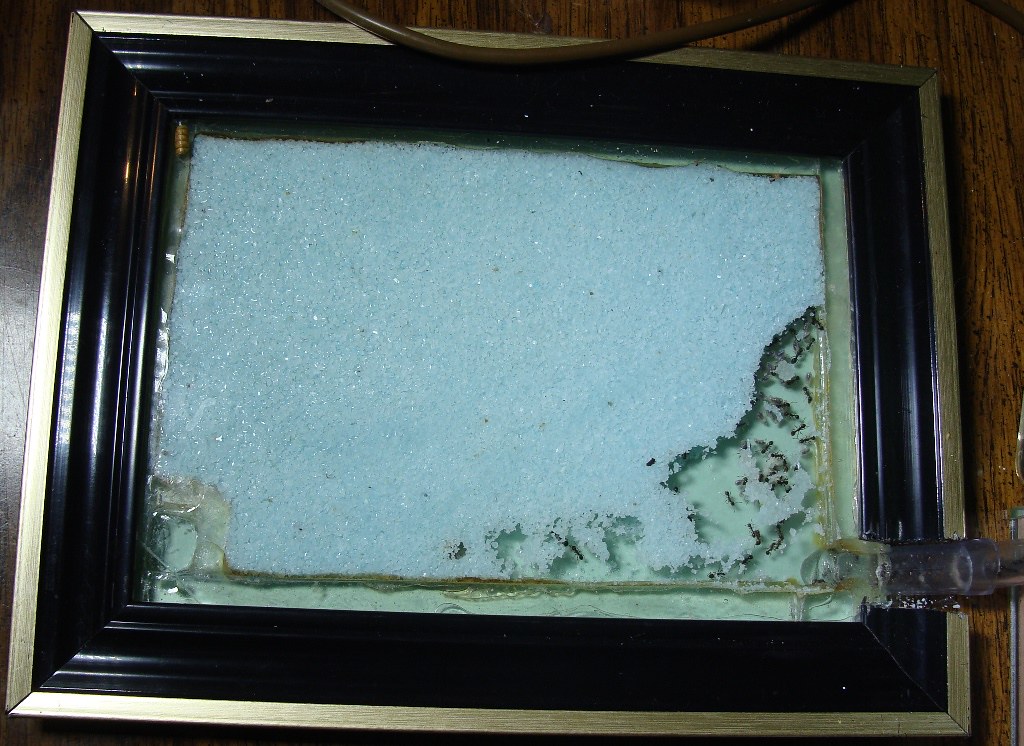
These are dspdrew's:
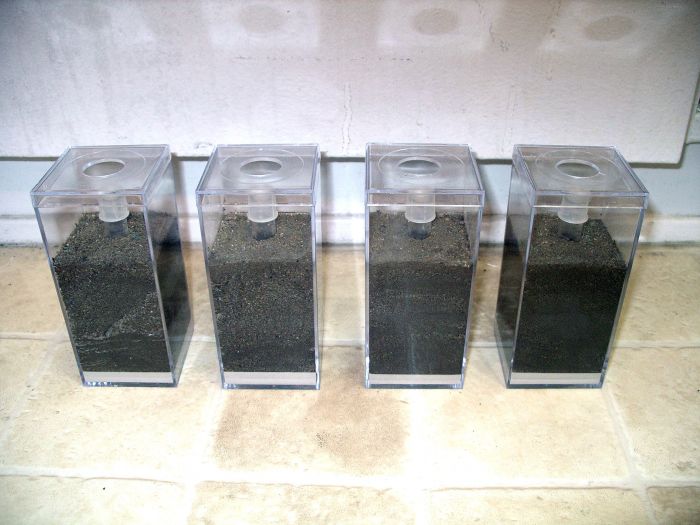
There are many unique ways to provide water to a queen. Here are some others:
Coasters and clay. 2 glass coasters, with a wall of clay and a soaked cotton ball.
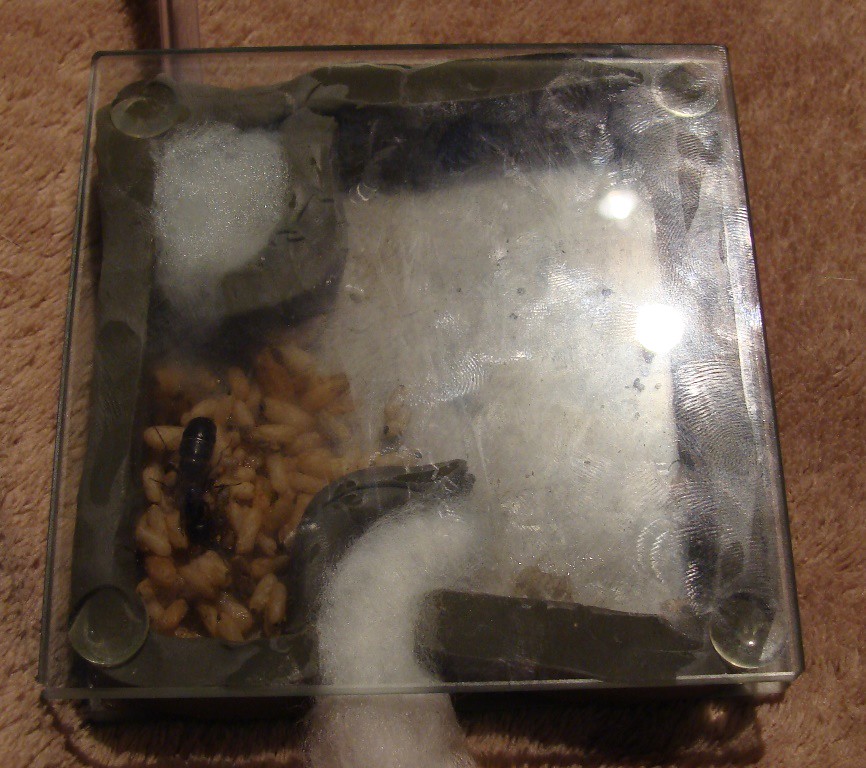
Foraging area, with a piece of vinyl connected to a waterer:

Wood with glass on top in foraging area:
This works well for Myrmica, Leptothorax, and other small semi-claustral species. Provides a moist environment with the ability to forage. Has to be watered regularly.
Pictures from zielona.mrufka

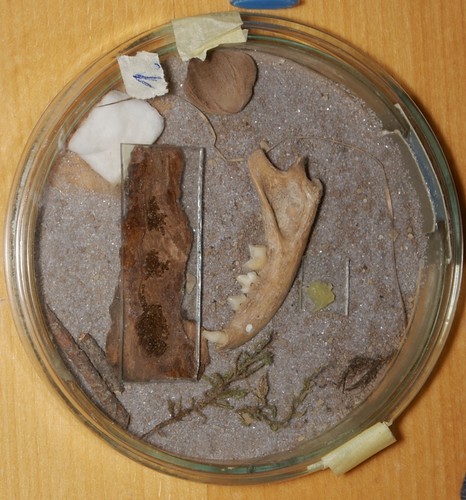
Small acrylic nests can also work (this one is a bit large for a single new queen, but it gives you an idea) This picture is also from zielona.mrufka
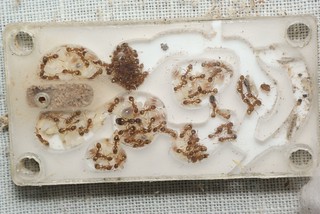
This is a wood nest made by wook to raise a certain Camponotus species that was known to do very poorly in test tubes:
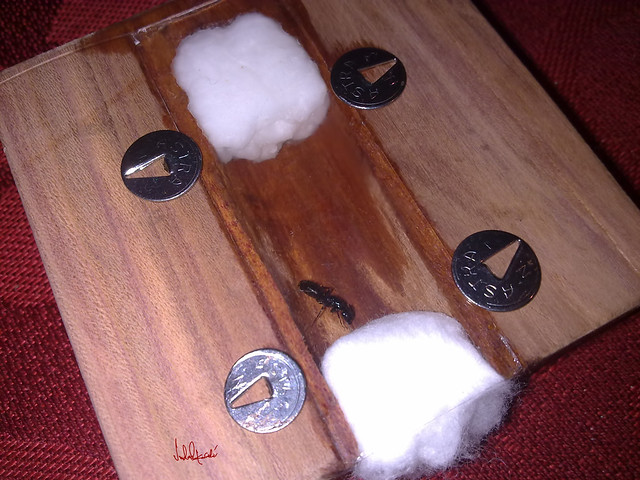
Buying pre-made Founding Chambers:
If you aren't into building your own or using test tubes, there are options to buy founding chambers from several sellers.
Also check the Market Place.
Information coming soon.
TarHeelAnts.com sells several founding chambers:
Growth Chamber (tarheelants.com/formicaria/growth_chamber.html)
Evolution Chamber (http://tarheelants.c..._chamber_i.html)
Companion Nest (http://tarheelants.c...anion_nest.html)
Talus (http://tarheelants.c...ia/talus-1.html)
Greater Talus (http://tarheelants.c...ater_talus.html)
Here are pictures of some member's ant keeping areas. You can see some different setups:
http://www.formicult...your-ant-areas/
There is also a thread for formicariums for larger colonies:
http://www.formicult...-and-outworlds/
Let's see pictures of your setups for Founding Queens! ![]()
What were they made out of? How well did they work?
PTAntFan's acrylic tower (http://www.formicult...wer/#entry32719)
Edited by Crystals, July 16 2017 - 7:14 AM.








